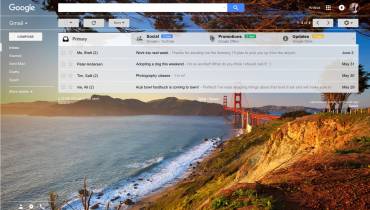How to Identify (and Maximize) Your Most Productive Hours
![How to Identify (and Maximize) Your Most Productive Hours [node:title]](/sites/default/files/styles/wide/public/man-best-productivity-hours_0.jpeg?itok=Vbn4QAWx)
Everyone has an internal groove that determines each day’s outcome. For example, some of us skip lunch because that’s when we are more focused. Others are morning people who clear out important tasks before 9 am.
Finding yourself working better at night doesn’t mean you hate your workmates. On the contrary, it could be the sweet spot in your day when you are most productive.
Unfortunately, some are yet to discover those productive hours. This could be because their traditional work schedule never overlaps with those periods, or they’re too distracted to recognize the pattern.
If you’re among those who are yet to determine their best work period, there are ways to find it. This article covers tips on discovering your most productive hours and how to maximize them.
So, How Do You Figure Out Your Peak Hours?
According to a paper published by the IZA Institute of Labor Economics, 1:30 pm is the peak performance time for taking tests. However, that’s based on a study that analyzed about 500,000 UK university student exams taken at 9:00 am, 1:30 pm, and 4:30 pm.
Your golden hours are peculiar to you, whether they correspond with someone else’s or not. Take the steps outlined below to help you determine when you’re most energetic to work:
1. Start Observing
As we mentioned, you might be too distracted to notice that you work best during a specific period. So, start making observations about your work.
Document when you start and end tasks. This way, you can have a record that shows how fast you finished specific jobs and those hours of the day when you executed them the fastest.
Keep tracking your performance this way, and after a while, check back to find a pattern. There should be specific hours when you’re repeatedly productive.
2. Track Your Productivity
Apart from observing your start and stop times when executing tasks, tracking your work hours can help. This way, you measure how fast you finish jobs against the time you allot to each.
You can start by using a piece of paper to draw out your daily schedule. Write down the tasks you have to handle throughout the day and allot a block of time for each.
As you get things done, indicate the finish times for each job. Take notes on whether you finished with time to spare or added extra minutes or hours.
After a week or month, go back to your notes to find those hours you finished your jobs in less time than you allotted.
If using the pen and paper method is too hectic, you can digitize the process. Spreadsheets can make everything easier than manually drawing lines across numerous sheets of paper. That said, you can go for time tracking software applications designed to help you monitor working hours.
Time trackers are now multi-purpose productivity apps that gather helpful performance metrics. They’re no longer generic tools that only generate timesheets and log billable hours. Instead, some programs provide tools to help you organize and analyze your workflow. You can also check apps and websites you spend time on, helping you know what to avoid to reduce distractions and boost productivity.
Once your workweek data is generated, course through it to find your peak hours. You’ll find that figuring out your prime hours is as satisfying as knowing how to track work time when working.
3. Collect Data from Your Bosses
Most employers use remote employee monitoring applications to assess their workers’ productivity. They collect data by tracking the amount of time employees spend on their projects and how well they execute specific tasks. This means they have information that could help find your prime work period.
Since most employers engage in ethical monitoring practices, your supervisor will likely not object to sharing specific data with you. You can use these analytics to find when you consistently put out your best work.
4. Work Outside Regular Hours
Your golden hours may fall outside your regular 9 to 5 work schedule. For example, it could be your lunch break, shortly after your closing hour, or in the dead hours of the night when you’re normally asleep.
Suppose you’ve not felt that energy during your regular hours. It’s time to do some rotation. Start adjusting your schedule to allow you to work outside work hours. For example, you can skip lunch or power up your computer at midnight and log some billable hours.
Of course, it would be easier to try different periods if you have a flexible work schedule. If your office maintains a strict 9 to 5 policy, you can reach out to your supervisor to work things out. Take permission to defer jobs that can be handled outside the office and deal with them at home.
The situation is different for remote workers. You can quickly load up your computer at 3 am or 1 pm to get things done as long as you’re not behind any deadline. So, take your time to tinker with different periods and track your productivity while at it.
5. Set Up a Performance-Friendly Work Environment
You could be wasting your productive hours without knowing it. Workplace distractions and disorganized schedules could make you burn through those golden hours without recognizing them. To make those work times shine, set up functioning schedules and optimize your day for peak performance.
Start by removing distractions such as social media applications and websites. Some productivity apps can help you keep tabs on websites and programs you use often. This way, you can identify distractions that take your eye off the ball. Then, it’ll be easier to know what to block and when.
Next, create a dedicated workspace if you work from home. Doing that will help you avoid domestic distractions and separate work from your personal life and activities.
Working within a defined schedule also helps to keep you focused. You can then let your friends and family know that you’re working, and they should respect that work boundary.
Deal with engagements that might disrupt your work beforehand. For example, if you have an event you can no longer meet up with due to work, make sure you clear it in time and reschedule.
Keeping separate personal and work devices also helps. That means no distracting notifications and pop-ups while at work.
6. Find Anomalies and Deal with Them
You might think you have found your productive hours only to end up struggling during those periods. In some cases, you could be dealing with specific issues that reduce your energy and affect your focus. For example, you might have changed your coffee or switched meals on certain days.
You have to track every minute detail to know what went wrong. So, keeping a journal to take notes of updates like a different bus route, meal order, or schedule change will help you assess what’s wrong.
Best Ways to Make the Most of Your Golden Hours
Once you’ve found your golden hours, you have to use them right. You can’t just waste them on less-important tasks and non-work-related activities.
For starters, you should save your energy for your peak hours. That’s because your body has a threshold after which it just stops functioning optimally.
For example, a Stanford University study reported that performance declines after 50 hours of work. In addition, the research states that working after putting in 55 hours would be pointless.
So, ensure you’re not already past your peak energy levels before your golden hours.
Next is reserving essential and challenging tasks for your productive hours. Top-priority jobs that require critical thinking and decision-making should be handled when you’re at your best.
Keeping distractions away during those peak hours is another rule you must follow. For example, you can keep a distraction list nearby to pen down ideas, reminders, and notifications that pop up when you’re deep at work. This way, you can deal with them later without completely ignoring them.
In Conclusion
Keep optimizing your productive hours and finding the best way to use them. There could be other prime hours in your day as well, and you can keep discovering them.




















